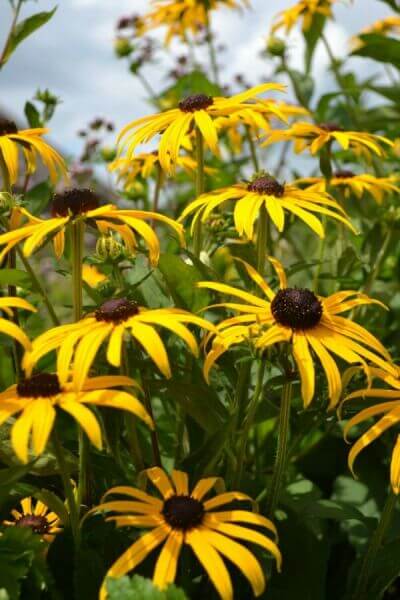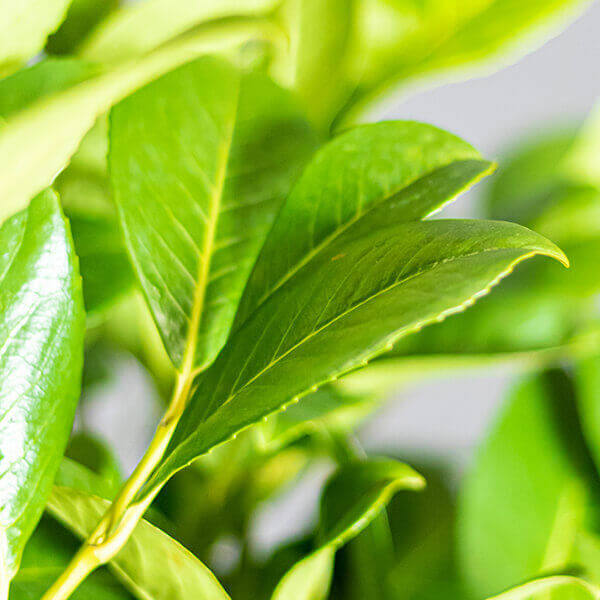Hedging Plants For Windbreaks
Hedging Plants For Windbreaks
Blog Article
Compact Hedge Plants For Urban Gardens
Improve your garden's attraction with rich hedge varieties such as Yew (Taxus), Thuja, Laurel, Photinia, and Bamboo, commemorated for their structural integrity and ecological advantages.
Yew and Thuja offer evergreen protection and winter durability, while Laurel offers fast development and broad, fragrant leaves.
Photinia adds seasonal beauty with its lively red foliage, and Bamboo lends a low-maintenance, peaceful atmosphere.
These hedges improve air quality, decrease sound, and develop tranquil, private spaces.
Correct planting, spacing, and upkeep ensure vigorous growth and eco-friendly consistency.
Explore how these rich ranges can raise your garden's beauty and well-being.
Secret Takeaways
Change Your Garden With Lush Hedge Ranges
- Select Yew for its thick, evergreen growth and exceptional durability.
- Opt for Laurel for its fast growth and broad leaves, guaranteeing quick personal privacy.
- Select Photinia for its dynamic seasonal foliage, which turns a striking dark red.
- Utilize Bamboo for a low-maintenance, winter-hardy hedge with aesthetic appeal.
- Space plants 2-3 per meter and prune routinely for ideal development and health.
Popular Hedge Plants
When changing a garden with rich hedge ranges, it's important to think about popular hedge plants such as Yew, Thuja, Laurel, and Photinia due to their special attributes and advantages.
Yew (Taxus) is extremely respected for its durability and thick, green growth, making it a prime choice for withstanding landscapes.
Thuja is noted for its evergreen foliage and robust winter resilience.
Photinia adds seasonal vibrancy with red leaves that darken over time, developing vibrant visual appeal.
Laurel provides fast growth and fragrant, broad leaves, perfect for fast privacy.
Furthermore, Bamboo is an outstanding choice for ambiance, using a low-maintenance, winter-hardy choice that improves the garden's aesthetic with its classy, swaying walking sticks.
These selections deal with a variety of horticultural needs and choices.
Benefits of Garden Hedges
Garden hedges offer a plethora of advantages, making them a valuable addition to any landscape. These natural barriers are cost-effective to carry out and provide substantial wind security, enhancing air blood circulation and contributing to sound reduction. The thick foliage of hedges like Thuja and Beech makes sure privacy by blocking exposure, developing a remote and serene environment.
Hedges also play an important role in microclimate policy, offering a stable environment that fosters plant development and decreases temperature level changes. Their complex leaf structures filter contaminants, improving air quality and adding to a healthier garden community.
Moreover, hedges excel in sound decrease, taking in and deflecting sound waves to lower ambient sound levels. This double functionality of offering both acoustic and visual privacy improves the total harmony and aesthetic appeal of any garden.
Planting and Upkeep Tips
For a successful hedge, precise preparation of the planting location is essential. Guarantee the soil has correct pH and drain to support strong root advancement.
Area the plants appropriately for the chosen types. Water the hedge frequently during its initial growth phase, adjusting as required with seasonal changes.
Carry out a systematic pest control and disease prevention method, utilizing chemical or natural treatments when necessary. Regularly inspect for aphids, mites, and fungal infections.
Apply mulch to retain wetness and reduce weeds. Seasonal pruning promotes thick development and air flow, vital for plant health.
Following these guidelines will help you cultivate a dynamic, properly maintained hedge that boosts the appeal of your garden.
Spacing and Trimming Standards
Spacing and Trimming Guidelines
Correct spacing and trimming are important for cultivating healthy, visually appealing hedges. Appropriate spacing ensures each plant receives enough nutrients, light, and airflow.
Follow these guidelines for optimal hedge upkeep:
- Spacing: Position hedge plants 2-3 plants per meter to motivate robust development.
- Pruning Strategies: Routine pruning is vital for keeping wanted hedge height and shape. Cut brand-new development in summertime and cut back older wood during winter.
- Seasonal Care: Change cutting schedules and approaches according to seasonal requirements to ensure plant health.
- Hedge Height: Routinely monitor and trim to keep the preferred hedge height and attain consistent looks.
Sticking to these steps will ensure your hedge flourishes, enhancing both the appeal and performance of your garden.
Selecting the Right Hedge
Choosing the Right Hedge
Picking the suitable hedge involves examining elements such as mature height, foliage density, and ecological durability. Effective hedge plant selection requires comprehending each species' development qualities and site-specific adaptability.
For instance, Yew (Taxus) provides exceptional durability and dense growth, while Thuja is significant for its winter strength. Furthermore, considering maintenance requirements is crucial; fast-growing types like Laurel or Privet demand regular cutting, whereas low-maintenance choices like Bamboo or Ivy may be preferable for those looking for minimal maintenance.
Environmental elements such as soil type, light availability, and wetness conditions should likewise direct the selection process. This mindful method makes sure the chosen hedges will prosper, providing both functional and visual benefits to the garden landscape.
Shipment and Planting Advice
To ensure your hedge plants grow, they should be delivered by specialized carriers and planted promptly upon arrival.
Follow these important actions for effective planting:
- Soil Preparation: Improve the soil with raw material to enhance drainage and nutrient content.
- Planting Depth: Produce a trench two times the width and equivalent to the depth of the root ball.
- Watering Techniques: Water thoroughly after planting, keeping the soil consistently damp however not filled.
- Mulching: Use a layer of mulch to retain moisture and suppress weeds.
Client Assistance and Service
Offered the crucial role of timely support in horticultural pursuits, our client assistance group is available six days a week through telephone, email, and social media to provide professional recommendations and promptly resolve any issues. Their dedication to quick reaction times guarantees consumer satisfaction by resolving queries related to plant health, optimal planting methods, and maintenance schedules.

----------------------
Within 24 hr
This thorough assistance system, reinforced by an outstanding 9.3/ 10 client score, highlights our dedication to improving the gardening experience for every single customer.
Often Asked Concerns
For How Long Does It Consider Hedge Plants to Develop?
Hedge plants generally require one to three years to become fully established, with the exact duration varying by species and growing conditions.
Effective care throughout this critical period is essential for robust development. Consistent watering, vigilant weed control, and appropriate fertilizer application are pivotal in promoting strong root development.
For instance, fast-growing types like Laurel might develop faster, while slower-growing varieties such as Yew might take longer. Diligent maintenance accelerates the establishment procedure, resulting in healthy and dense hedges.
What Are the very best Hedge Plants for Personal Privacy?
The concern of the finest hedge plants for privacy involves evaluating evergreen and deciduous alternatives.
Evergreen hedges like Thuja, Laurel, and Cypress supply year-round protection, making sure constant privacy.
On the other hand, deciduous hedges such as Beech use seasonal privacy, shedding leaves in chillier months.
Key upkeep ideas for privacy hedges include routine trimming, fertilizing in spring, and correct spacing-- usually 2 to 3 plants per meter.
Furthermore, constant watering and persistent weed elimination are vital for promoting healthy, dense growth.
Can Hedge Plants Bring In Wildlife to My Garden?
Yes, hedge plants can draw in wildlife to your garden by offering vital benefits like shelter, food, and nesting websites, consequently enhancing regional biodiversity. For instance, yew, holly, and laurel are excellent for bring in birds, while ivy supports a range of bugs.
Nevertheless, it's essential to keep in mind that there are some drawbacks, such as increased upkeep to manage insects and regular maintenance. Carefully choosing and maintaining hedge ranges can assist balance these advantages and drawbacks, ultimately promoting a sustainable and dynamic community in your garden.
Exist Any Flowering Hedge Plants Available?
Yes, there are flowering hedge plants offered that can boost the appeal of your garden.
For example, Elaeagnus, likewise referred to as Olive Willow, produces fragrant white flowers in the fall, including a touch of sophistication.
Photinia, another popular choice, showcases vibrant red leaves that develop into an abundant green, creating a dynamic visual impact throughout the seasons.
To guarantee these plants grow, it's essential to practice proper pruning methods and seasonal maintenance, such as cutting brand-new development in the summer season and cutting back in the winter.
These steps will assist keep the health and visual appeal of your blooming hedges.
How Do I Avoid Insects in My Hedge Plants?
To prevent insects in more info hedge plants, utilize natural insect control approaches and keep correct hedge care. Present beneficial insects like ladybugs, which prey on harmful insects, to develop a well balanced ecosystem.
Regularly inspect your hedges for signs of infestation and immediately eliminate any affected parts to prevent the spread. Ensure the health of your hedges by applying well balanced fertilizers and supplying appropriate water.
Use mulching to keep soil wetness and correct spacing to reduce plant tension and promote robust development. These practices collectively help in minimizing bug concerns and maintaining a healthy hedge.
Conclusion
In essence, picking the ideal hedge varieties such as Yew, Thuja, and Laurel can transform any garden into a tranquil sanctuary. These plants offer year-round greenery, boost visual appeal, and offer useful advantages like sound reduction and wind protection.
Correct planting methods, accurate spacing, constant watering, and seasonal trimming are vital for optimum development.
Trusted shipment services and expert consumer support make sure a seamless experience from purchase to planting, making it easier than ever to raise your outdoor area.
Garden hedges offer a plethora of benefits, making them a valuable addition to any landscape. These natural barriers are cost-efficient to execute and supply considerable wind defense, improving air circulation and contributing to sound reduction. The thick foliage of hedges like Thuja and Beech ensures personal privacy by obstructing exposure, creating a tranquil and secluded environment.

Pruning Methods: Regular pruning is essential for keeping preferred hedge height and shape. Trim brand-new development in summertime and cut back older wood throughout winter season.
Report this page